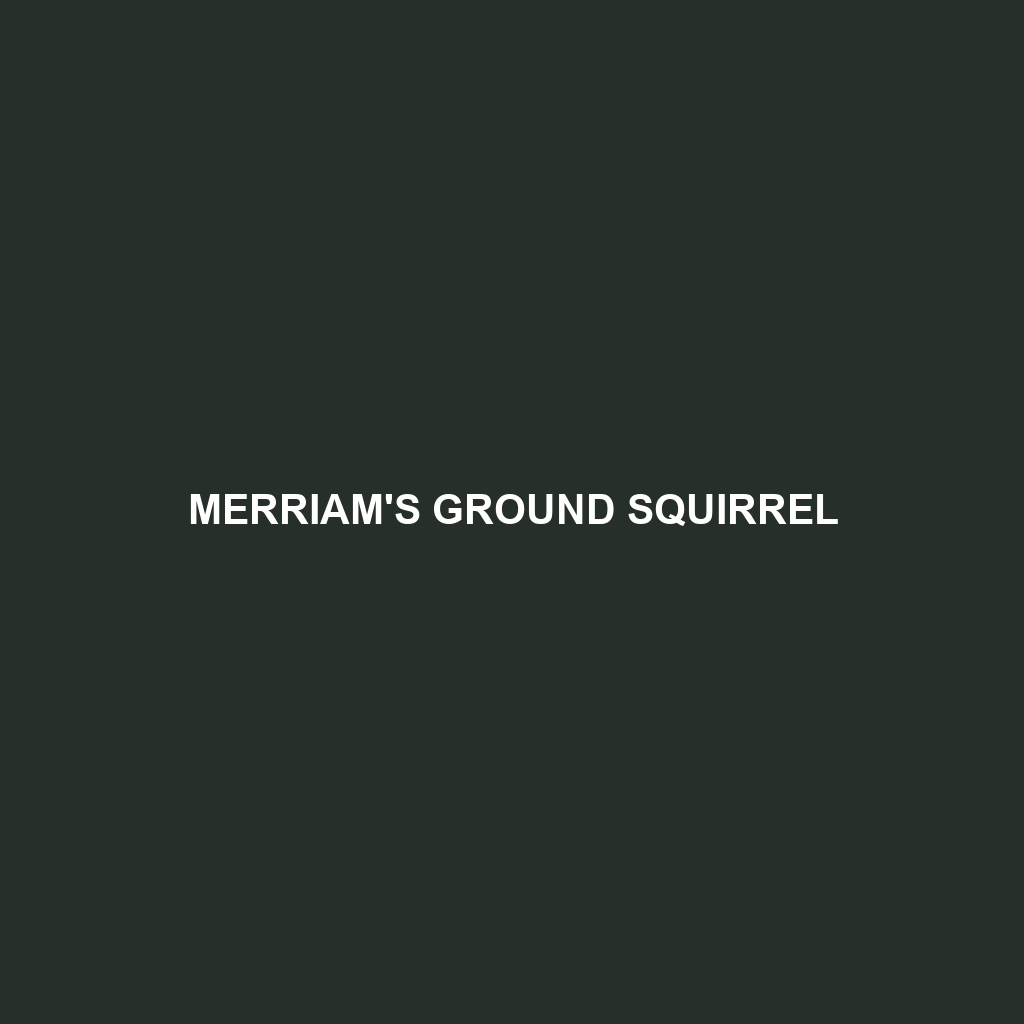Merriam’s Ground Squirrel: An In-Depth Species Description
Common Name: Merriam’s Ground Squirrel
Scientific Name: Spermophilus merriami
Habitat
Merriam’s Ground Squirrel is primarily found in the western regions of North America, particularly in the mountains and foothills of states like Colorado, New Mexico, and Utah. These squirrels thrive in alpine meadows, grasslands, and sagebrush habitats, where they can easily dig burrows for protection and nesting. Their preferred environments are characterized by rocky soil and an abundance of grasses and forbs that provide both shelter and food.
Physical Characteristics
Merriam’s Ground Squirrel typically measures between 9 to 12 inches in length, including a 3 to 5-inch tail. They have a stocky build, with short legs and a rounded body covered in a mixture of brown and gray fur, which serves as effective camouflage in their natural habitats. Notable features include a light-colored stripe running down their backs and distinctive facial markings that aid in species identification.
Behavior
Merriam’s Ground Squirrels are known for their social structure and burrowing behaviors. They often live in colonies and exhibit a range of vocalizations to communicate with one another. Active during the day, they spend their time foraging for food, sunbathing, and performing ‘sentinel’ duty, where one or more individuals keep watch for predators while the rest engage in feeding activities. This behavior not only attracts attention from researchers but also assists in forming a complex community dynamic.
Diet
The diet of Merriam’s Ground Squirrel is primarily herbivorous, consisting of a variety of grasses, seeds, and flowers. They are known to forage opportunistically, taking advantage of seasonal food availability, which may include roots and bulbs. During late summer, these squirrels are particularly active in accumulating fat reserves for hibernation, further emphasizing their seasonal feeding habits.
Reproduction
Merriam’s Ground Squirrels breed in the spring following their emergence from hibernation. Females typically give birth to a litter of 5 to 8 young after a gestation period of about 25 to 30 days. The young squirrels remain in the burrow for about six weeks, relying on their mother for nourishment before venturing out. Notably, these squirrels exhibit nurturing behaviors, with mothers often staying close to their offspring until they are adept at foraging on their own.
Conservation Status
Currently, Merriam’s Ground Squirrel is not classified as endangered, but certain populations may face threats due to habitat destruction and climate change. Conservation efforts are focused on habitat preservation and monitoring population trends to ensure their long-term survival in the wild.
Interesting Facts
– Merriam’s Ground Squirrels are named after the American naturalist Daniel Merriam, who studied North American mammals.
– These squirrels are known for their unique hibernation patterns; they can enter a torpid state in extreme weather conditions.
Role in Ecosystem
Merriam’s Ground Squirrel plays a crucial role in its ecosystem as both a herbivore and prey for various predators, including hawks, snakes, and coyotes. Their burrowing behavior helps aerate the soil and promote plant growth, making them important contributors to the health of alpine meadows and grasslands. Additionally, their interactions with other species create a balanced food web, showcasing their significance in maintaining ecological stability.
